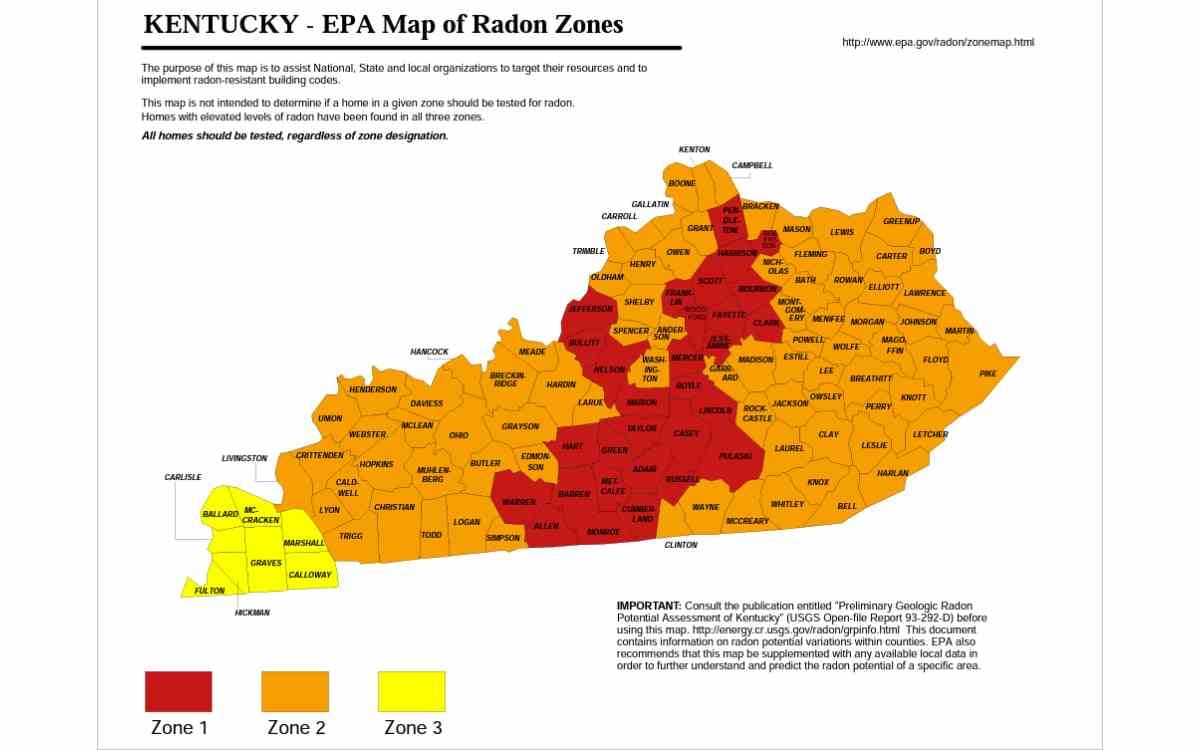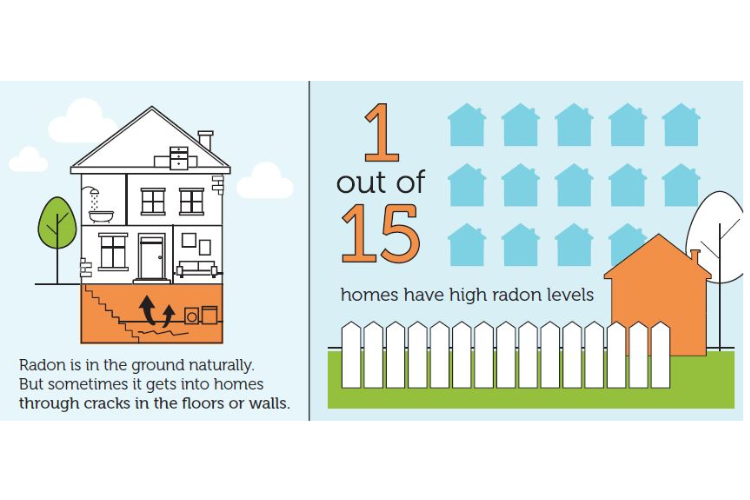When we think of threats to our health, our minds often jump to visible dangers like pollution or unhealthy habits. However, some of the most insidious threats are the ones we can't see or feel. One such hidden danger that might be lurking beneath our homes is radon gas. In Northern Kentucky, understanding radon levels and the significance of testing becomes paramount for safeguarding the health of our loved ones.
Radon 101: What is Radon Gas?
Radon is a colorless, odorless, and tasteless radioactive gas that forms naturally from the decay of uranium in rocks and soil. It can enter homes through cracks in foundations, walls, floors, and other openings, accumulating to potentially hazardous levels. Long-term exposure to high radon levels has been linked to an increased risk of lung cancer, making it a serious health concern.
Radon in Kentucky
EPA Radon Zones: Division of Risk

To help assess the potential threat posed by radon gas, the Environmental Protection Agency (EPA) has classified various regions across the United States into three distinct zones based on their predicted radon risk levels. These zones are:
- Zone 1 (High Risk): This zone is characterized by counties where the predicted average indoor radon screening level exceeds 4 picocuries per liter (pCi/L), the recommended action level set by the EPA. In these areas, homes are at a higher risk of having elevated radon levels and, consequently, a higher potential for radon-related health issues.
- Zone 2 (Moderate Risk): Counties within Zone 2 have predicted average indoor radon screening levels between 2 and 4 pCi/L. While the risk in these areas is relatively lower than in Zone 1, it's important to note that any level of radon exposure carries some risk.
- Zone 3 (Low Risk): Counties in Zone 3 have predicted average indoor radon screening levels below 2 pCi/L. While the risk is considered lower in these areas, it's crucial to understand that radon can still be present, albeit at levels generally less likely to cause immediate health concerns.
Northern Kentucky's Radon Profile: A Closer Look
Northern Kentucky falls under the umbrella of these EPA zones. While most of the region falls into Zone 2, indicating a moderate risk, some areas could be categorized as Zone 1 due to higher predicted radon levels. This discrepancy highlights the importance of localized testing to assess the radon risk for individual homes accurately.
Why Test for Radon?
Testing for radon is a proactive step that can significantly impact your household's health and safety. Here's why testing is so crucial:
- Knowledge is Power: Testing provides crucial information about your home's radon levels. Without testing, you might be unaware of potentially high levels of radon exposure.
- Health Protection: Long-term exposure to elevated radon levels is associated with an increased risk of lung cancer. By knowing your home's radon levels, you can take appropriate measures to reduce exposure and mitigate health risks.
- Mitigation Possibilities: If testing reveals high radon levels, effective mitigation methods are available. These can include sealing cracks, installing ventilation systems, and more, which can help reduce radon gas buildup.
- Property Value: In areas with high radon levels, having evidence of low radon levels can be a selling point for prospective buyers, enhancing the overall value of your property.
Download Home Buyers and Sellers Guide To Radon
Unveiling the Unseen Threat
In pursuing a healthy home environment, it's essential not to overlook the hidden dangers that can arise from below. Radon gas, despite being invisible and odorless, can significantly impact our health. By understanding the EPA radon zones and the necessity of testing, Northern Kentucky residents can take proactive steps to ensure the safety and well-being of their families. Remember, knowledge is the first line of defense against unseen threats, and testing for radon is critical to that defense strategy.



.png?width=750&height=300&name=smoking%20and%20radonradon_the%20geiler%20company%20(1).png)
